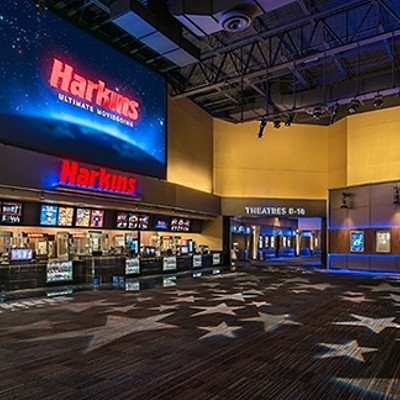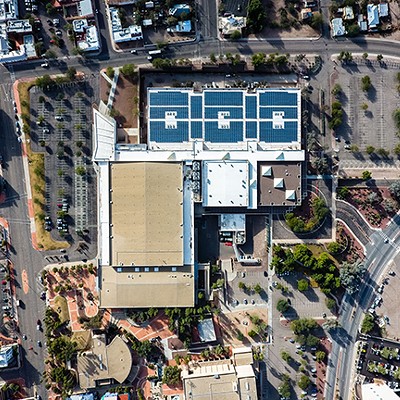Small homes on 7,000-square-foot lots zoned R-1 comprise much of Jefferson Park, but randomly scattered throughout the area are also dozens of similarly zoned larger parcels. And on some of those parcels, the owners have been turning them into developments.
"A developer took a beautiful old three-bedroom house on East Edison Street and added two bedrooms to it, then built a seven-bedroom house with two kitchens and five bathrooms in back of it," laments neighborhood association President Dyer Lytle. "He uglified the property and didn't care about the neighborhood."
Roger Hartley, a member of the neighborhood association, says the zoning is essentially useless. "Regulations mean nothing if R-1 zoning allows 14 people to live next to you. The purpose of this zone was a single-family residence, but (the Land Use Code) is so general, its not working. These places are quasi-apartments, and when my wife heard about them, she flipped out and said we should move."
Alarmed by a handful of such projects, especially because they might house University of Arizona students who can sometimes be troublesome neighbors, the concerned residents approached their City Council representative, Kathleen Dunbar. Working together, they quickly proposed a Land Use Code parking-regulation change to address the issue, while discarding several other possibilities as politically impossible.
Among the rejected alternatives was one which would simply permit a single house to be built on an R-1 zoned lot, no matter its size. Another proposal that wasn't pursued would have mandated at least 7,000 square feet of land area for each home on an R-1 parcel, a regulation similar to that found in Pima County's zoning ordinance.
Instead, the new city-wide code, which took effect in November, requires any home with five or more bedrooms in an R-1 zone, or an R-1 lot with two houses on it, to have on-site parking that meets stringent landscaping and access standards. At the same time, the definition of a bedroom was changed to make it more inclusive.
But according to one local builder, this change backfired on the concerned citizens.
"The neighbors goofed themselves up (by doing that)," home builder Mike Teufel Jr. says. He points to his current project at 1634 E. Waverly St. in the Jefferson Park neighborhood, where a three-bedroom home now sits vacant on a 10,000-square-foot, R-1 zoned piece of property stripped of all vegetation.
"I wanted to build a beautiful, large Spanish-Colonial style house with a swimming pool on that lot," Teufel says. But because of the new regulations, he was required to have on-site parking. Based on that, he decided instead to add two bedrooms to the existing house, build a five-bedroom home in back of it and install a 10-space parking lot.
Describing the new structure as a two-story box and "the ugliest thing you've ever seen," Teufel said the revised parking regulations forced him to abandon his original idea. "Would you like to live in a house with a parking lot on site?" he asks.
Responding to Teufel's criticism of the new regulations, Lytle says they weren't a mistake, and that the home builder's comments are a ruse. But Lytle also thinks the regulations aren't completely satisfactory.
"The (code revision) might slow these developers down," the neighborhood association president says, "until the issue can be (further) addressed."
For her part, Councilwoman Dunbar agrees the revised parking regulations are not sufficient to protect R-1 neighborhoods.
"We put a Band-Aid on the wound," she says of the quick fix, "but probably should have done stitches."
At the same time, Lytle, Hartley and other members of the Jefferson Park Neighborhood Association are aghast at what Teufel proposed to do on Waverly Street. They claim he is only trying to maximize his profit, while ignoring the character of the neighborhood and the low-density intent of the R-1 zone.
"I don't know what the original intention of the lot owner was," Teufel replies. "Maybe it was to have two homes. A nice big lot lends itself to that.
"The neighbors are hell-bent on stopping development, and I'm OK with that," Teufel continues. "Personally, this is the first such project I've done in R-1, and I'll never do it again."
In a later interview, however, Teufel said he'd changed his mind about his project on Waverly Street, even though he had already submitted building plans to the city for the two homes.
"I think I'll go with the $500,000 Spanish-Colonial house," Teufel said last week. "What I'm doing now is a stupid business decision." He understands he'll need a lot of variances from the Land Use Code in order to implement his idea, but if he doesn't get them, Teufel says he can always go back to the two-house option.
When informed of this apparent change of heart, Lytle asked, "How big will the house be, and how many bedrooms will it have? If it has 12 bedrooms, that's one thing. But if it's a four-bedroom house, that will be a big improvement over what we had before."
Meanwhile, the people in the Jefferson Park neighborhood are looking at additional steps they can take to try to protect themselves from multi-unit development projects in single-family zones.
"What can we do to stop this?" asks Lytle. "That's very difficult to answer. We just want to live in our houses peacefully."












